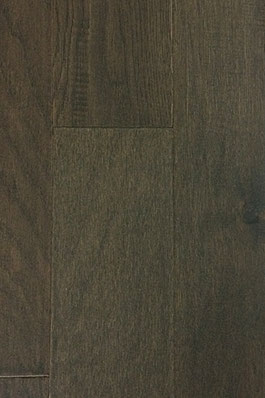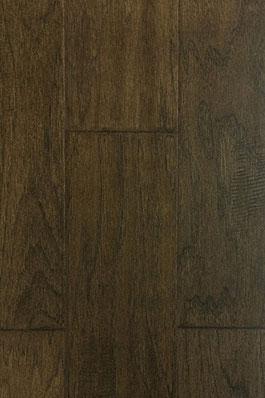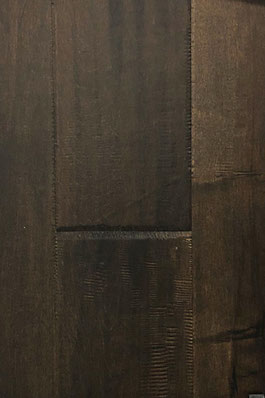ENGINEERED HARDWOOD FLOORING
Wood flooring has a charming warmth that many people want to incorporate into their homes. Depending on the wood species and finish that you select, the flooring style may reflect sophistication, casual elegance or something else entirely. As you begin searching for wood flooring for your living space, you should initially decide between engineered hardwood and solid wood flooring. While these materials look similar, engineered floors have unique qualities that may make them more practical for use in some living spaces.
The Facts About Engineered Hardwood Floor Flooring
Solid hardwood is appropriately named because each slate is comprised of a single piece of thick wood that has been precisely cut and finished. It often also has a top layer for protection and
beauty. Engineered hardwood flooring, on the other hand, is usually comprised of a top layer that is made from natural wood, and this layer may be made out of any number of wood species. Like
solid wood flooring, it can have a smooth sheen, deep striations or a hand scraped look. The bottom layer of engineered hardwood slats or planks is also made out of natural wood, and a durable
core material is sandwiched in between.
This core in the center of engineered floors usually has five to seven layers of pressed and treated wood. This may be plywood or high-density fiberboard in most cases. Each layer is pressed
together in opposing directions. This unique composition provides engineered hardwood with many of its unique qualities and benefits, such as its strength.
The Benefits of Hardwood vs Solid Hardwood Floors
If you are trying to decide if engineered hardwood flooring is suitable for use in your living space, be aware that the core’s composition makes the planks or slats less likely to be damaged by
temperature changes and by exposure to high levels of humidity and moisture. Solid wood may shift, contract or even warp in some cases when these environmental factors are present. With this in
mind engineered hardwood flooring is a superior material to install in a living space that may have these environmental factors present, such as a basement. The material is also well-suited to be
installed over a concrete slab foundation or used in combination with a sub-floor radiant heating system. In fact, engineered hardwood is an excellent option for use in most areas of the
home.
Be aware, however, that engineered hardwood flooring is not completely resistant to water damage. Instead, it is less likely to be damaged when moisture is removed quickly as well as when the
slats are installed very close together. A sealant may provide additional protection. Engineered floors generally should not be exposed to water for more than two hours, but the actual time
varies based on the specific product that you decide to install in your home. With this in mind, you may still not want to install this material in a bathroom or laundry room.
What to Look for When Selecting Engineered Wood Flooring
After deciding that engineered hardwood floors are right for your home, you are ready to explore the many available products. While solid wood is generally only available in hardwood species,
such as maple, oak and hickory, engineered hardwood is available in these species as well as many others. Some of the other options include walnut, cherry, birch and more. In addition to choosing
the right wood species for your home, you will need to select a suitable stain hue as well as a lovely finish, such as smooth or hand scraped.
Generally, engineered hardwood planks or slats are approximately one-half inch thick, but there is some variation to this. If the top layer is suitable to be sanded and refinished multiple times,
the engineered floors will usually be thicker.
In addition to focusing on these two features of engineered hardwood floors, consider the installation process. Generally, engineered wood flooring uses a floating installation technique, but the
actual installation process may vary depending on the specific material that you select.
The Installation Process for Engineered Hardwood
The installation process for engineered hardwood is designed to be easy to install, but you may still prefer professional installation to ensure that your new floor lives up to your high
expectations. Professional installation may also result in faster completion of the project so that you can begin enjoying your new flooring as soon as possible.
Regardless of the type of engineered hardwood that you select, an underlayment should be installed. Various types of underlayment materials are available, and they help to keep the slats in
place, buffer sounds and more. Some engineered hardwood slats or planks have an interlocking feature that enables them to quickly be snapped into place. However, many of the planks may need to be
precisely cut to fit the dimensions in your rooms. While stapling or gluing engineered hardwood is not usually necessary, some people prefer to do so to create a more authentic wood floor sound
when walking across it.
If you choose a stapling or gluing process, understand that this can impact the scope of a future floor replacement project. Interlocking planks can easily be removed so that new flooring can be
installed, but removing planks that have been glued or stapled is time-consuming and labor-intensive.
Care and Maintenance Requirements for Your Engineered Hardwood Floors
Many people
believe that solid wood is a preferable option when environmental factors are not present because it can be sanded and refinished many times. In fact, some solid hardwood floors that are
well-maintained could provide you with decades of use. However, many types of engineered hardwood products may also be sanded and refinished several times over the years to extend their life.
Some of these products have an extended warranty that provides you with a guarantee against scratch damage as well.
Keeping your new engineered hardwood floors clean is fairly easy to do. It typically does not require specialized waxing or specific cleaning products. Sweeping engineered hardwood every day or
two may be required in high-traffic homes, such as if you have pets and children. Otherwise, you may be able to sweep only once a week in some instances. In addition, you should plan to run a
damp mop over the surface periodically for further cleaning. If you use a soap and water mixture, remember to mop the residue away with fresh water. The flooring should not be excessively damp
and should air-dry quickly.
We provide an exceptional range of gorgeous engineered hardwood flooring styles for you to explore and select from. After picking out a gorgeous material for your home, you understandably want to
ensure that the finished project is as impressive as you have imagined. Through our professional engineered hardwood floor installation service, you can enjoy the beauty of new flooring without
having to lift a finger.














































